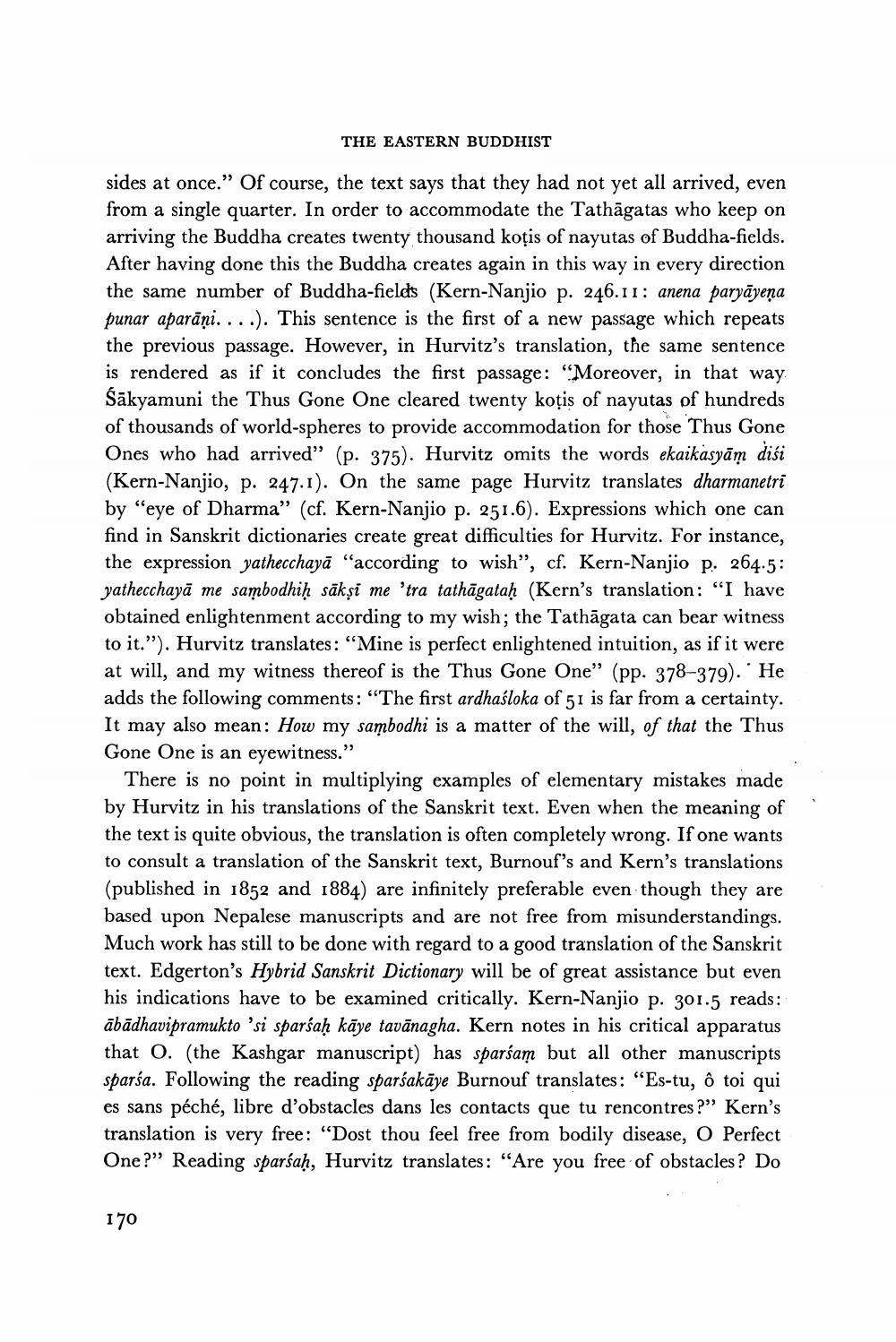Book Title: Book Reviews Of Scripture Of Lotus Blossom Of Fine Dharma Author(s): J W De Jong Publisher: J W De Jong View full book textPage 2
________________ THE EASTERN BUDDHIST sides at once." Of course, the text says that they had not yet all arrived, even from a single quarter. In order to accommodate the Tathāgatas who keep on arriving the Buddha creates twenty thousand koțis of nayutas of Buddha-fields. After having done this the Buddha creates again in this way in every direction the same number of Buddha-fields (Kern-Nanjio p. 246.11: anena paryāyeņa punar aparāni....). This sentence is the first of a new passage which repeats the previous passage. However, in Hurvitz's translation, the same sentence is rendered as if it concludes the first passage: "Moreover, in that way Sākyamuni the Thus Gone One cleared twenty kotis of nayutas of hundreds of thousands of world-spheres to provide accommodation for those Thus Gone Ones who had arrived” (p. 375). Hurvitz omits the words ekaikasyām diši (Kern-Nanjio, p. 247.1). On the same page Hurvitz translates dharmanetri by "eye of Dharma." (cf. Kern-Nanjio p. 251.6). Expressions which one can find in Sanskrit dictionaries create great difficulties for Hurvitz. For instance, the expression yathecchayā "according to wish", cf. Kern-Nanjio p. 264.5: yathecchayā me sambodhiḥ sākși me 'tra tathāgataḥ (Kern's translation: "I have obtained enlightenment according to my wish; the Tathāgata can bear witness to it."). Hurvitz translates: "Mine is perfect enlightened intuition, as if it were at will, and my witness thereof is the Thus Gone One" (pp. 378-379). He adds the following comments: "The first ardhaśloka of 51 is far from a certainty. It may also mean: How my sambodhi is a matter of the will, of that the Thus Gone One is an eyewitness.” There is no point in multiplying examples of elementary mistakes made by Hurvitz in his translations of the Sanskrit text. Even when the meaning of the text is quite obvious, the translation is often completely wrong. If one wants to consult a translation of the Sanskrit text, Burnouf's and Kern's translations (published in 1852 and 1884) are infinitely preferable even though they are based upon Nepalese manuscripts and are not free from misunderstandings. Much work has still to be done with regard to a good translation of the Sanskrit text. Edgerton's Hybrid Sanskrit Dictionary will be of great assistance but even his indications have to be examined critically. Kern-Nanjio p. 301.5 reads: ābādhavipramukto 'si sparśaḥ kāye tavānagha. Kern notes in his critical apparatus that O. (the Kashgar manuscript) has sparsam but all other manuscripts sparsa. Following the reading sparśakāye Burnouf translates: “Es-tu, ô toi qu es sans péché, libre d'obstacles dans les contacts que tu rencontres ?" Kern's translation is very free: "Dost thou feel free from bodily disease, O Perfect One?" Reading sparsah, Hurvitz translates: "Are you free of obstacles? Do 170Page Navigation
1 2 3 4 5 6
